College Skateboarding Educational Foundation
Since 2017, the College Skateboarding Educational Foundation has been pushing higher learning through scholarships, events, and non-stop fundraising. Sparked by their friendship, a lifelong dedication to skateboarding, and unlocking possibilities through education, Executive Director Keegan Guizard, Co-Chairman Thomas Barker, and the entire College Skateboarding squad have volunteered their sweat and resources to establish CSEF as the only national scholarship fund for U.S.-based skateboarders.
With over 100 scholarship recipients and a growing network of graduates and volunteers, CSEF continues its mission to teach the world through skateboarding by supporting skateboarders pursuing their academic goals. With a Nike SB Dunk Low Pro colorway that captures the collegiate journey, we spoke to Keegan Guizard and Tommy Barker about CSEF’s origins, their unlikely academic journeys, and the details of their custom SB.
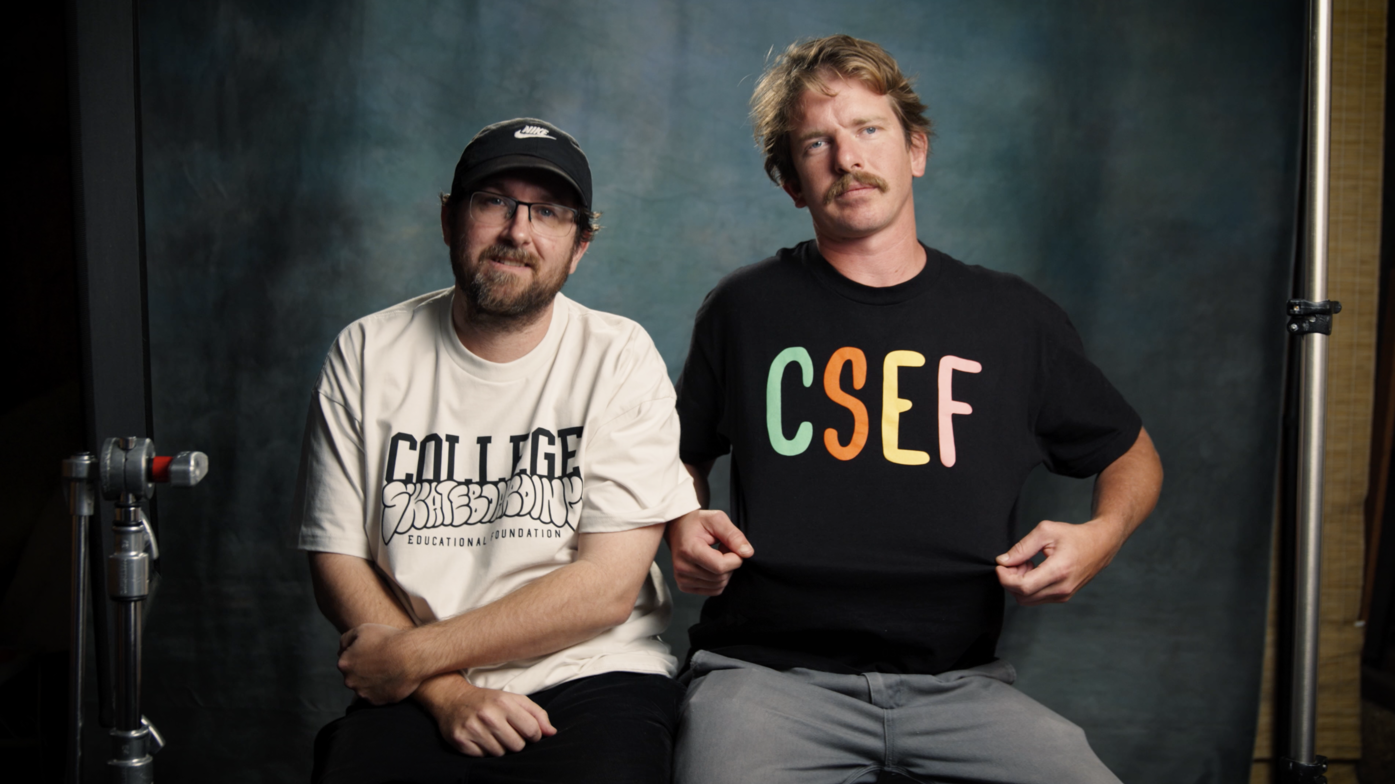
Thomas Barker & Keegan Guizard
What were your experiences with college and academia before starting CSEF?
Keegan Guizard: My mom was a school teacher and my dad laid tile for a living. We were a low-income family, but it was a given that I’d go to college. To my parents, going to university was a beacon of success–it’s what you did to get ahead. A lot of my friends were in the same boat. It wasn’t a question of “if” I’d go to college, but which one.
Thomas Barker: I’ve worked in skateboarding from a very young age, so in high school, college wasn’t really on my radar. I was too focused. There was a point very early on in high school when I thought about applying to college, but I didn’t even have a major in mind. I wasn’t making the connection between school and other parts of my life. Skateboarding was my school. I was so focused on work and skating that I dropped out. I chased the opportunity but lost my job and career when the Great Recession hit. I started applying for new gigs and randomly, someone close to me said, ‘Maybe you should go back to school’ to someone standing next to me.
That was the first time anyone in skateboarding spoke to me about college in a positive way. Just happened to hear it.
With both of you having tough experiences with higher learning, what inspired you to turn things around?
Thomas: Skateboarding was my only lens. I realized the outside world interacted with skateboarding and I needed to learn more about that world to learn more about skateboarding. When I started school again, I was laser-focused. I realized I had so many blind spots. It’s not as if skateboarders don’t go to college, but I started thinking about how we connect education and skating on a deeper level.
Keegan: I almost flunked out after my first semester. I was on the wrong path—partying and not taking things seriously. It got to the point where my friends were going through really tough, life-changing situations, and I thought I was next in line, so I turned things around. I got on the Dean’s List in my second semester. Those are the broad strokes, but there was a lot of work and reflection to get there.
Why do you think there’s a perception, at least in the US, that skateboarding is anti-education?
Thomas: In my opinion, skateboarding is marketed to skaters who want to be sponsored, not average skaters. There are millions of skaters, but a very small percentage make a career out of it. Something that makes CSEF special is that we’re focused on average skaters. We want to use skateboarding as a tool to help skateboarders. You can learn from how skateboarding is marketed and bring the same vibes to succeed in life.
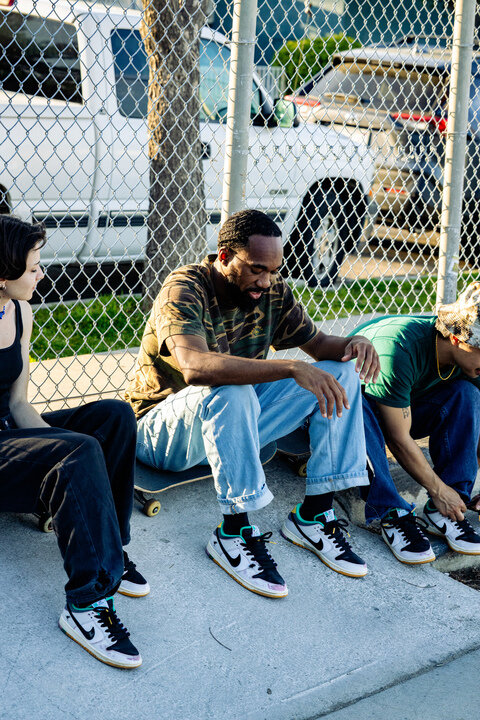
That’s interesting because it touches on this idea of community and giving back to skateboarding in a completely different way.
Thomas: Reading so many applications truly helps you learn about each applicant’s world view. It’s amazing to see how skateboarding can prepare someone to succeed outside of it. Skateboarding, for the most part, makes good humans.
Keegan: The skaters in our program aren’t necessarily trying to climb the sponsorship ladder. They might be shredders, but they’re excelling in their own fields. We want to highlight the idea that people learn from skateboarding and bring that spirit into other disciplines. We feel that we have the experience to draw that corollary and help people achieve what they want.
A lot has been written and discussed about what that is: how skaters view things differently, which helps them in other lanes and mediums. How do you see it?
Keegan: The “fall and get back up thing” has been talked to death, you know? It’s not untrue, but I see it more as self-determination and autonomy. Skaters are more apt to bend the rules and test the boundaries of what the world asks or demands of us. Now and then, you’ll end up with a ticket, but you’ll also get results you couldn’t have reached without pushing against the rules. Sure, we hop fences or whatever, and that can mean everything or nothing at the same time. It’s all in how you frame it in your world. You can’t take skateboarding too seriously. That’s the beauty of it.
Is that what sparked you to form CSEF? That spirit of having an idea and seeing where it can go?
Thomas: I was around people in the nonprofit space, but didn’t see many organizations inside skateboarding helping skateboarding. That reframed things for me. Skateboarding had given me so much, but how was I giving back to skateboarding? I enrolled at an extension school, doing a two-year program in fundraising development and nonprofit business management. I wanted to learn how to do this thing. It was still a relatively open space at the time–the early days of the social skate movement as we know it today.
My final project was a business plan for scholarships for skateboarders. It’s incredible how close it is to how CSEF operates today. I showed it to a few people, but nothing really happened. Years later, I was invited to be a guest speaker at Neftalie Williams' class on skateboarding, business, art, and culture. Neftalie introduced me to Keegan, knowing we were like minds and we got along immediately. Halfway through having lunch together, we were like, ‘We gotta do this!’
Meeting Keegan got me energized. About a year and a half later, CSEF was up and running. Barely anyone showed up at the first fundraiser, but we were able to give out $3,000. In 2024, we were up to $90,000, so that’s a lot of growth in seven years.
Keegan: Before moving to California, I was going to school in North Carolina and constantly getting busted for skateboarding on campus. I had met a senior who had more experience navigating the bureaucracy of the institution and we ended up working together to get skateboarding legalized for students. That led to forming a skate club and eventually receiving funding to travel and to build ramps. We took trips to New York, Tampa, and Atlanta, among other cities with great skate scenes. It continued to grow and evolved into the Collegiate Skate Tour, which ran from 2012 to 2019.
In 2015, I moved to California. Amelia Brodka introduced me to Neftalie, and I eventually spoke at his class. Neftalie had an open-door policy to come back anytime, so I just barged the class when I knew Tommy was speaking and that’s how we met. I’m the “college skate guy” and Tommy had a business plan, I guess.
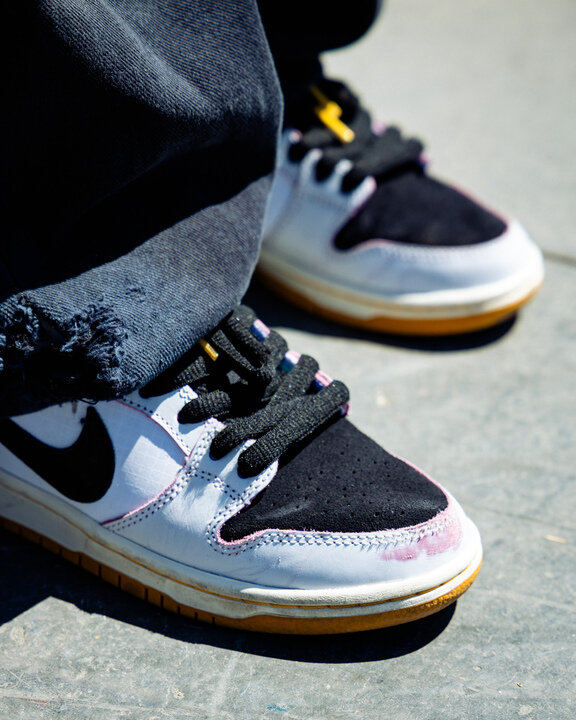
When you hear “scholarship for skateboarding,” there’s an assumption that it’s a reward for being super good at skating, which isn’t the case. How did you come up with the application and vetting process for CSEF?
Thomas: I’m not a big competition person. We wanted to help people who are passionate about skateboarding and the culture of skateboarding. What makes a good skater is subjective. We don’t want to grade talent, that’s not who we are.
We’ve had applications where someone will mention they have a mean nollie inward heelflip. That’s awesome and we’re stoked on that, but also, what else do you got? Do you have a plan? Are you ready to put in the effort? How hard are you willing to push towards your goals?
Keegan: The reason the skate community is so strong isn’t solely because of competition. It’s because people want to hang out and foster community. The college skate community is larger than it ever has been and it thrives on creativity and relationships.
Competition and the social skate movement are growing in tandem but are very separate worlds. The academic space in skating has grown exponentially since CSEF started.
Thomas: People are studying skateboarding in school now. It’s a way to inform other disciplines. I'm proud of that. People are using skateboarding as a tool of social change and our approach is to use it as a tool for social change for skateboarders. The most surprising thing is the acceptance of it and how many uber-talented people we've given scholarships to. We’re proud of all of them and looking back, it’s something I would have never imagined when we started.
Keegan: We’ve been able to get to a point in a short period where people we’ve given scholarships to are board members and contributing to CSEF. We’re building from the inside out and that’s a really wild feeling.
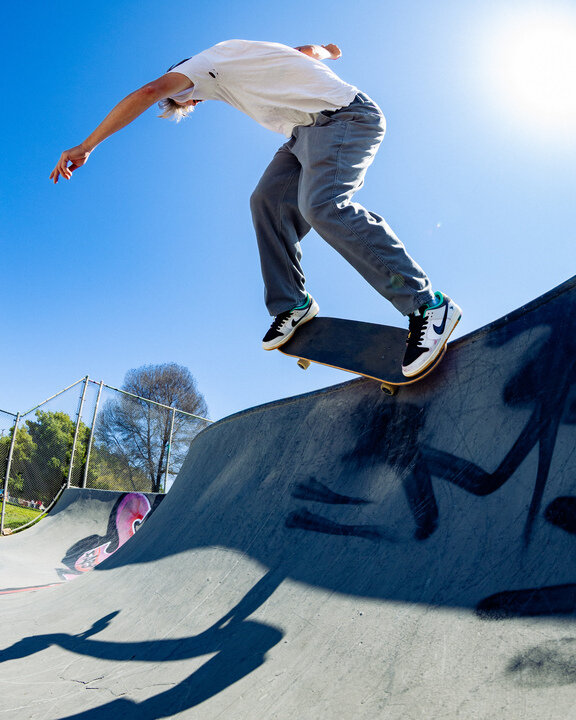
How do you respond to anti-intellectual or anti-school sentiments in the “I’ll just do a web search and learn myself” world we’re in?
Thomas: Don’t window shop and have a plan. If you want to be a doctor or urban planner, work backwards from there and think about how you’ll invest in yourself and your education. Does education fit your plan at all? Set yourself up for success and don't end up with a ton of student debt or just going through a program without knowing if it's a fit for you as a person. When I went back to school, I started at community college. Initially, I took classes for two years in almost anything I was curious about and didn’t have a background in. I didn’t have to rack up a lot of debt to do that. Plan and utilize community college as much as you can because that's what it's there for.
Keegan: People will ask me if you have to go to college and I would never tell someone they need school. Some careers require college degrees, or a degree could expedite your path to that career. If that’s going to make your situation better, then follow your dream and if you can, apply for scholarships.
Neftalie, Tommy, and I all had very different paths in education. As I said before, I almost lost my opportunity to stay in school because I didn’t know what I was doing. Don’t do that [laughs]. I worked hard but also got lucky and giving back with CSEF feels like the right thing to do.
Also, if you’re in school, take advantage of all the resources college provides because once you graduate, they all go away. Nerd out and dig in because it’s a really special thing.
How did you approach the design for the CSEF Dunk?
Thomas: We’re all volunteers, so CSEF is our second job. When it came time to work with Nike SB, we didn’t have a big picture as much as we wanted to exchange ideas with the design team and see what could happen. We didn’t have a big concept. Where we landed was very on the nose, which is great because that’s who we are. The simple idea was to have a shoe that captured the entire academic journey in a silhouette.
It has all the nostalgia pieces people in our generation remember, from the test scanner and graph paper to the pencil and tassel. The shoe wears away to an eraser color as you skate it. Then it has the two graduates on either side, so all those elements and references build up to this “graduation moment” in a sense. It felt natural every step of the way. It also had to skate really well, so that informed our design choices–keeping it slim and using a thinner tongue and the mesh on the inner. Getting the pencil lace “right” took more samples than anything else on the shoe [laughs]. There are a bunch of easter eggs as well, but we don’t want to spoil those...
Keegan: Pat Sison and Joshua Rowe, our art and creative directors, deserve a lot of credit for the ideation of those design elements and fine-tuning them. The flick and wearaway looks great with the kickflippers and heeflippers out there. It’s a majority black-and-white colorway, so to have that pink pop through looks really nice aesthetically.
How does that “graduation moment” feel now that it's unboxed?
Thomas: It’s been surreal working on this project and we’ll continue working our tails off to top this collaboration. Having a Dunk is one of the most surprising things CSEF has brought us.
Keegan: We’re always fundraising, but we’re really excited to celebrate the shoe. Our goal is to give out $100,000 this year and look forward to having more applications than ever. We just want to be in a position to keep growing, flowing, and supporting the people who deserve it. Everyone at CSEF is a volunteer, so we want to shout out the whole squad and thank them for keeping us going.
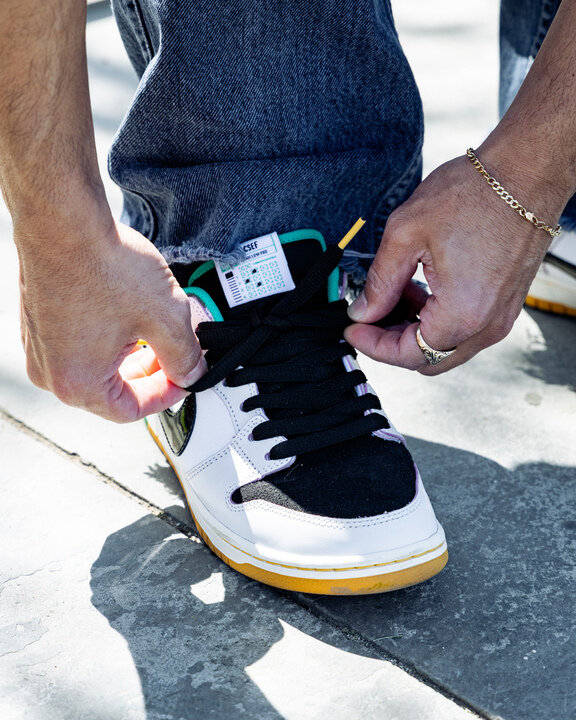
The SB Dunk Low by CSEF releases in select Skateshops May 1, and SNKRS May 3. Click HERE to find a shop near you and get notified in SNKRS.
08
01
24
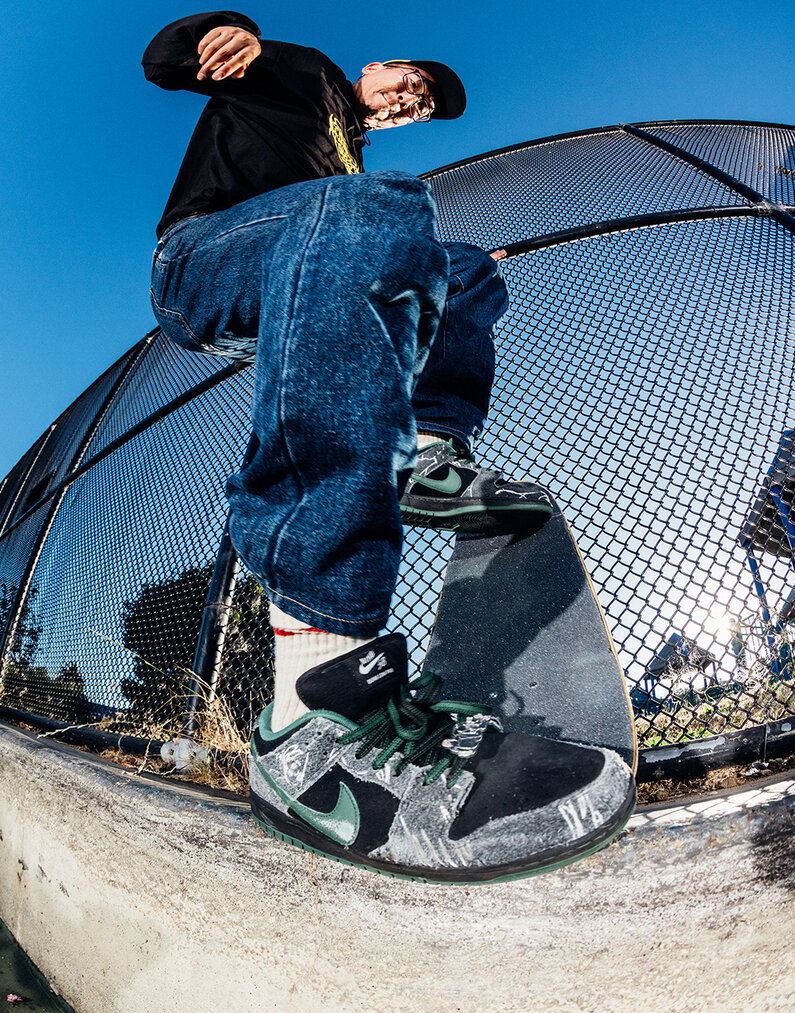
THERE
In an era where skateboarding is constantly debating whether it has reached an apex or is slipping away from its core values, THERE Skateboards stands as a testament to why we all fell in love with skateboarding in the first place.
CSEF
Dunk Low
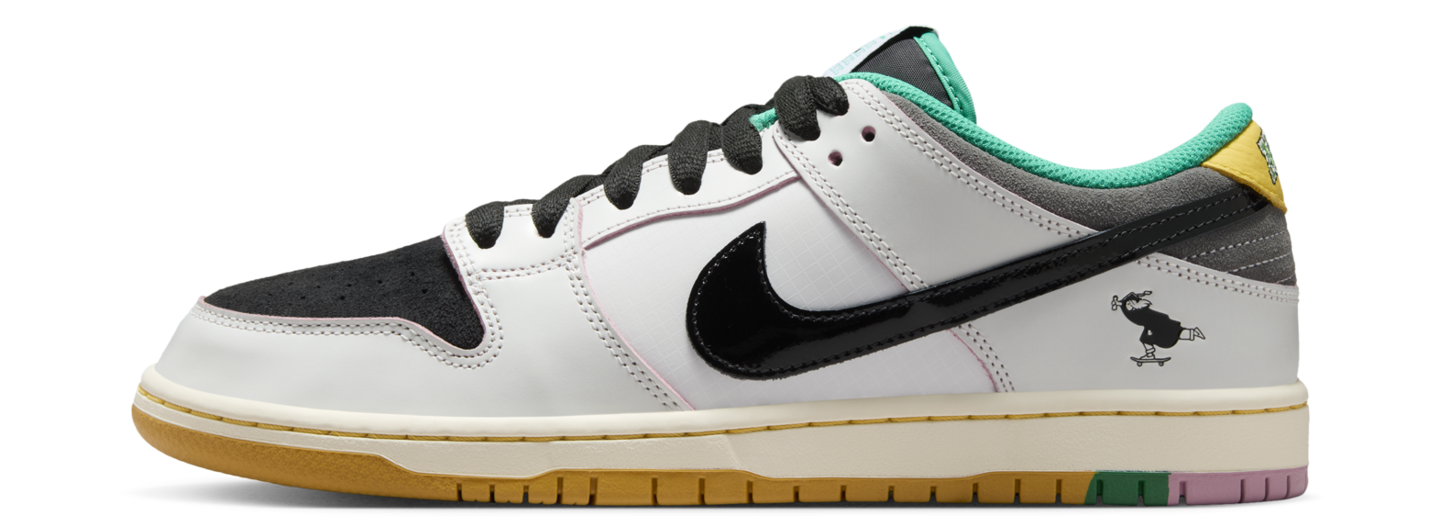
The Vault
10
06
22
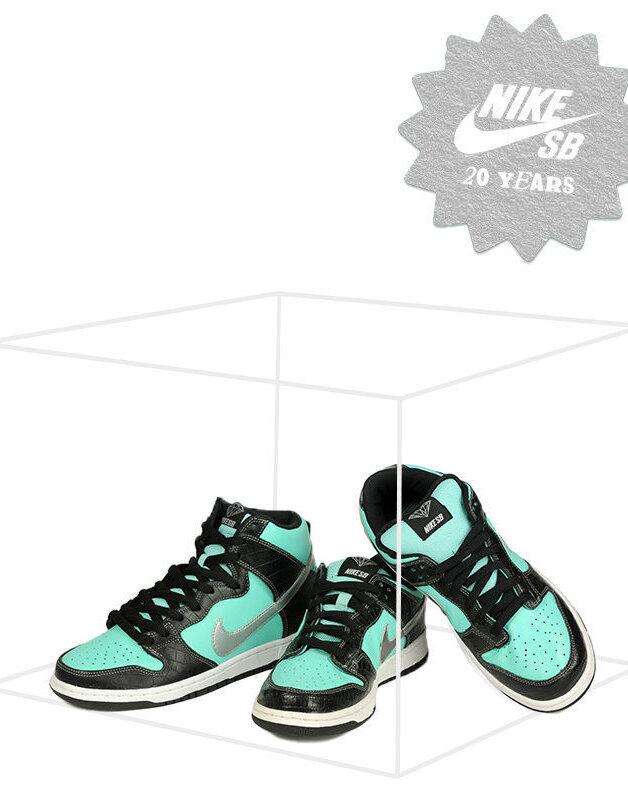
Dunk
If there’s one touchpoint that illustrates Nike SB’s approach to skateboarding, it’s the reintroduction of the Dunk.
Yuto
Matcha
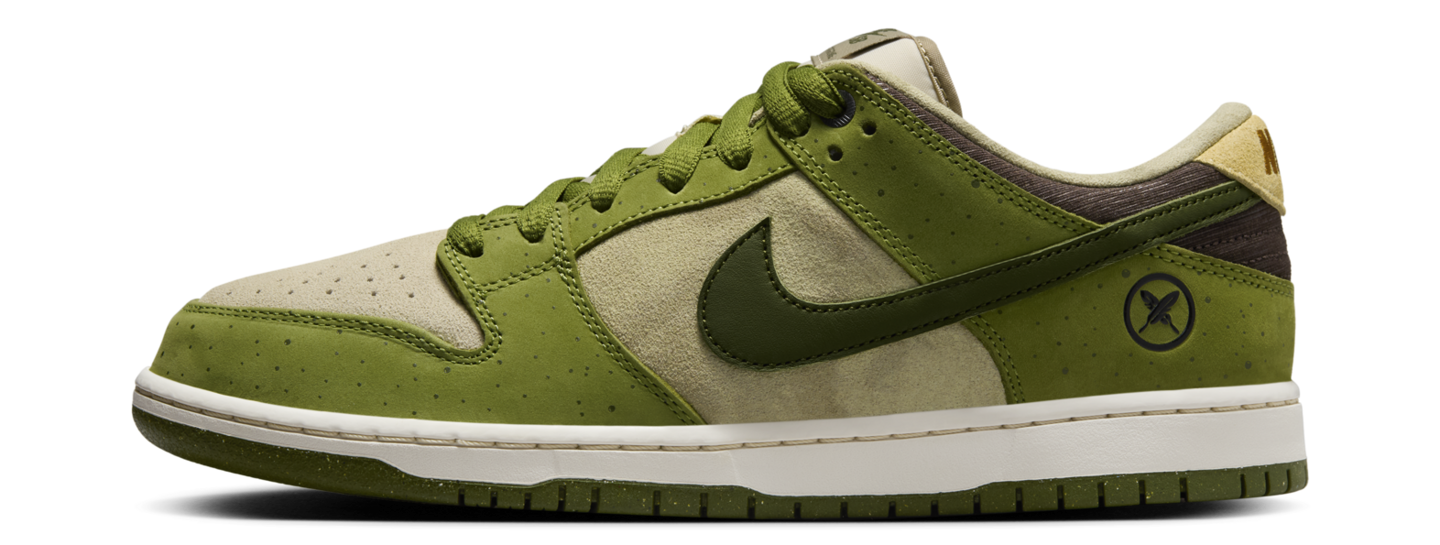
The Vault
Load More